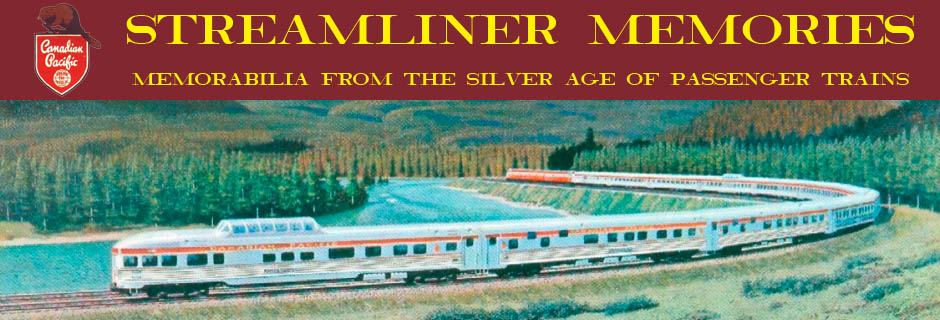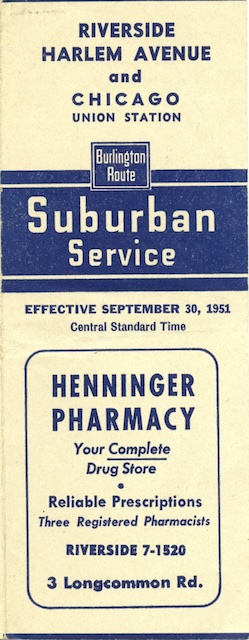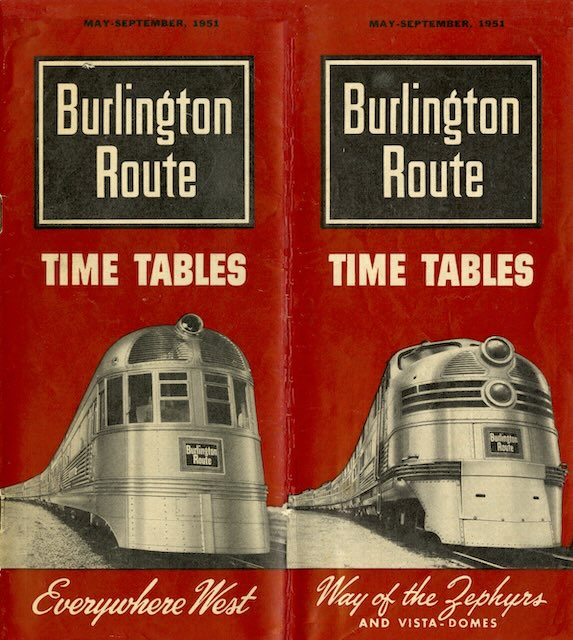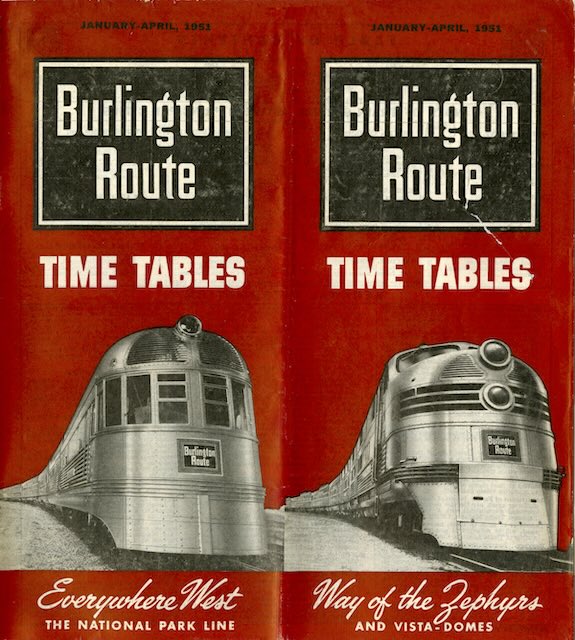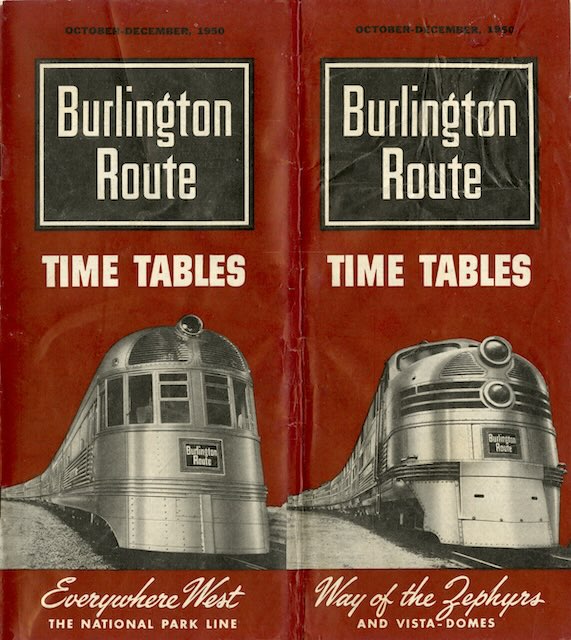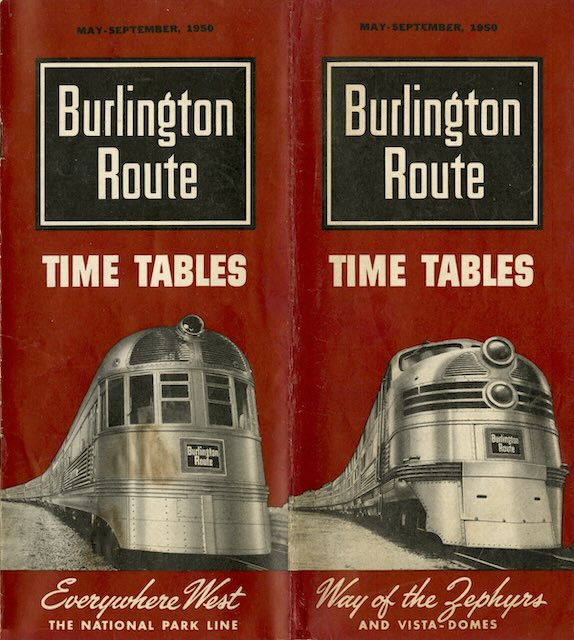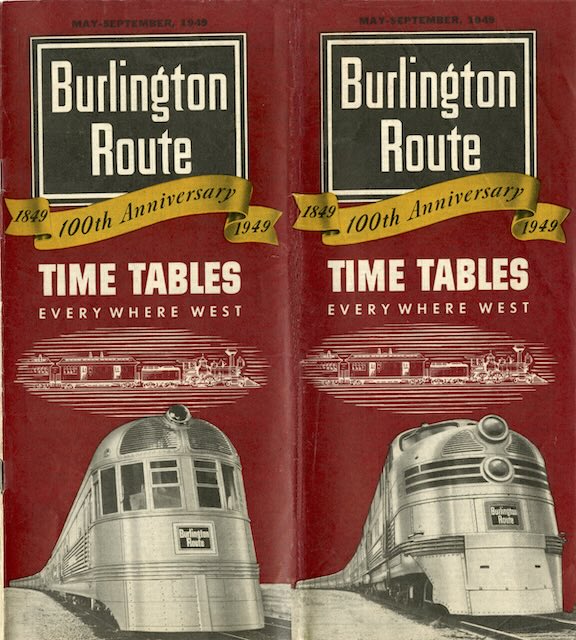The back cover of this timetable has another ad for Burlington Zephyrs. At least the headline isn’t “Diesel-Powered • Stainless Steel,” which as I suggested a few days ago, is redundant when referring to Zephyrs. Instead, the headline is “Luxurious Travel . . . No Extra Fare,” which is a little better. Otherwise the ad is not much different.
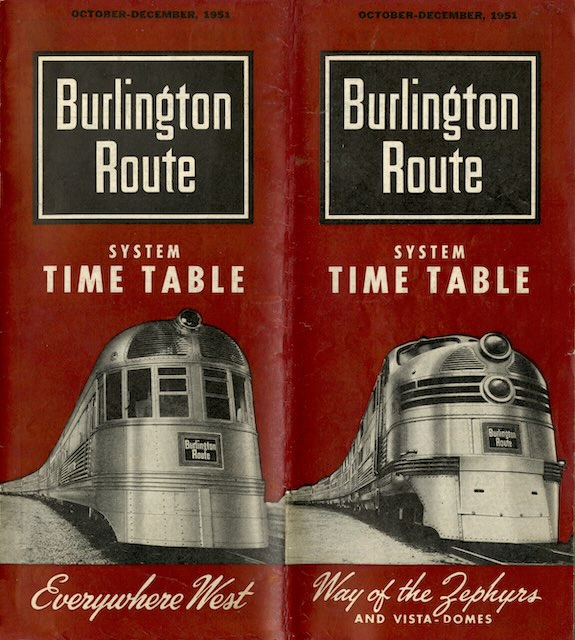 Click image to download a 22.2-MB PDF of this 36-page timetable.
Click image to download a 22.2-MB PDF of this 36-page timetable.
This is the first timetable that has the new equipment listings for the Mid-Century Empire Builder and the Western Star. The listings for both trains contain a similar error, saying that the observation cars went to both Seattle and Portland. The observation cars went only to Seattle while the Spokane, Portland & Seattle Railway carried what it called a club-lounge car on the Spokane-Portland leg of the trains. This car was nice but was not an observation car, meaning it did not have a rounded end or rear platform. This error would eventually be corrected, but not until about 1955.
